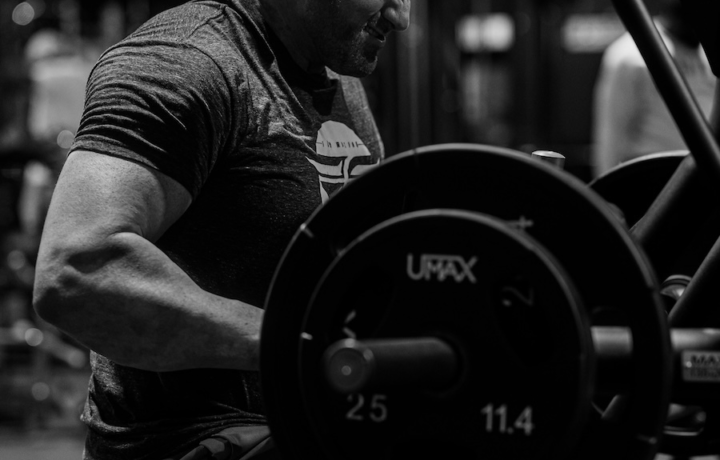Exercise
Resistance Band Pull Apart

Resistance Band Pull Apart
How to Perform
- Stand with feet shoulder-width apart, holding a resistance band at chest height with both hands, palms facing down and hands positioned slightly closer than shoulder-width.
- Engage your core and maintain a neutral spine position while pulling your shoulder blades slightly down and back.
- Inhale and begin to pull the band apart by drawing your hands away from each other while keeping your arms parallel to the floor.
- As you exhale, continue pulling until your arms are fully extended to the sides, forming a T-position with your torso while maintaining level shoulders.
- Focus on squeezing your shoulder blades together at the end position, keeping your wrists straight and elbows soft (not locked).
- Hold the fully extended position for 1-2 seconds, maintaining tension across your upper back muscles.
- Inhale as you slowly return to the starting position with controlled movement, resisting the band's tension.
- Keep your chest up and shoulders down throughout the entire movement, avoiding the tendency to hunch forward as the band creates resistance.
Important information
- Select a band with appropriate resistance—you should be able to complete the movement with proper form while still feeling challenged in the final repetitions.
- Keep your neck relaxed and in a neutral position throughout the exercise, avoiding the tendency to jut your chin forward.
- If you feel the exercise primarily in your arms rather than your upper back, decrease the band resistance and focus more on the shoulder blade squeeze.
- Try different hand positions (palms up, palms down, or thumbs up) to target slightly different areas of the upper back muscles.

Resistance Band Pull Apart
Exercise Details
Primary Muscles
Muscle Groups
Mechanic
Built for progress
Take the guesswork out of training
Create personalized AI-powered workout plans that evolve with you. Train smarter, track every rep and keep moving forward, one workout at a time.






The Resistance Band Pull Apart is a versatile exercise that deserves a prominent place in any fitness regimen, particularly for those just beginning their strength journey. This simple yet effective movement primarily targets the rear deltoids and trapezius muscles, making it exceptional for developing that coveted upper back definition while improving posture that often suffers from our modern, screen-focused lifestyles.
For beginners, this exercise offers a gentle introduction to resistance training with minimal risk of injury when performed correctly. The beauty of the Resistance Band Pull Apart lies in its adaptability—simply choosing bands of different tensions allows you to progressively challenge yourself as your strength develops, ensuring continuous improvement without plateauing.
In bodybuilding circles, this movement is valued as an accessory exercise that helps create balanced shoulder development, preventing the front-heavy appearance that can result from overemphasizing pressing movements. As a warm-up tool, few exercises can match its effectiveness at activating the upper back musculature before heavier training. The increased blood flow and neural activation prepare the body for more intense work while reducing injury risk.
Recovery protocols increasingly feature the Resistance Band Pull Apart due to its low impact nature and ability to flush the targeted muscle groups with nutrient-rich blood without causing additional muscle damage. This makes it ideal for active recovery days when maintaining movement without hindering repair is the goal.
From a training perspective, the exercise offers dual benefits for both strength and endurance development. The controlled tension throughout the movement builds fundamental strength in often-neglected posterior chain muscles, while higher repetition sets effectively build muscular endurance that transfers to improved posture throughout daily activities and athletic performance.
The Resistance Band Pull Apart proves that sometimes the simplest tools yield the most impressive results. Whether incorporated into warm-up routines, used as a corrective exercise, or programmed as part of a comprehensive training plan, this movement delivers remarkable benefits for minimal equipment investment.
FAQ - Resistance Band Pull Apart
The resistance band pull apart primarily targets the rear deltoids (rear shoulder muscles) and rhomboids while also engaging the middle trapezius and rotator cuff muscles. This posterior chain activation makes it excellent for improving posture and balancing shoulder development.
To make the exercise easier, choose a lighter resistance band or widen your hand position on the band. To increase difficulty, use a heavier band, narrow your grip, slow down the movement, add a pause at full extension, or increase your rep range.
The most common mistakes include shrugging the shoulders up toward the ears, bending the wrists excessively, and rushing through the movement without control. Keep your shoulders down and back, maintain straight wrists, and focus on squeezing your shoulder blades together at the end range.
You can safely perform resistance band pull aparts 3-5 times per week due to their low-impact nature. They work excellently as a daily warm-up before upper body training, as part of a posture-correction routine, or as a recovery exercise between more intense training days.
Yes, when performed correctly, pull aparts can help alleviate shoulder pain by strengthening the often-neglected posterior shoulder muscles that balance the shoulder joint. They promote better scapular positioning and rotator cuff activation, potentially reducing impingement issues, though you should consult a healthcare professional if you have existing shoulder injuries.













